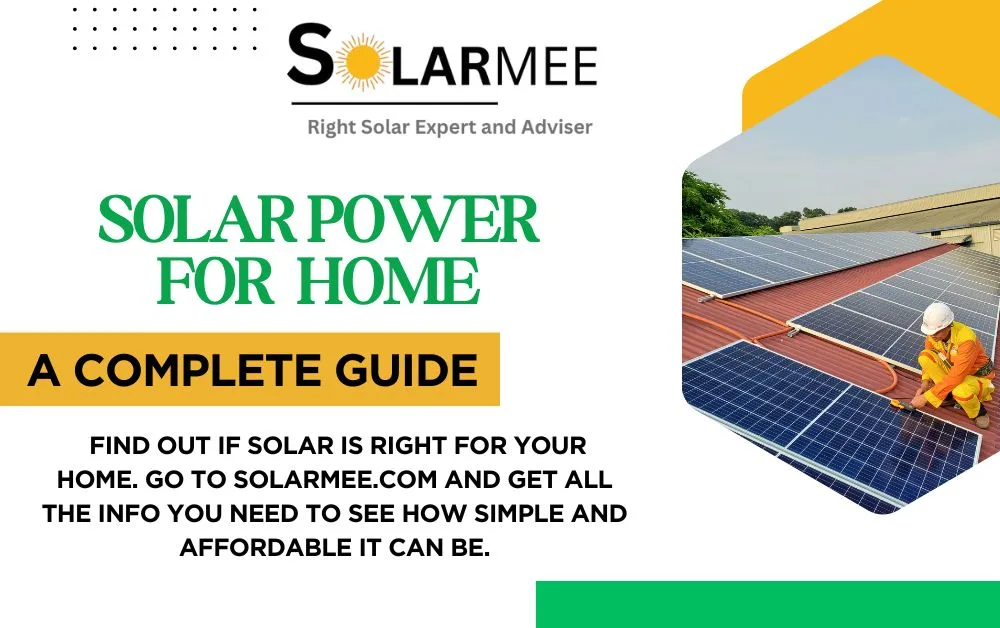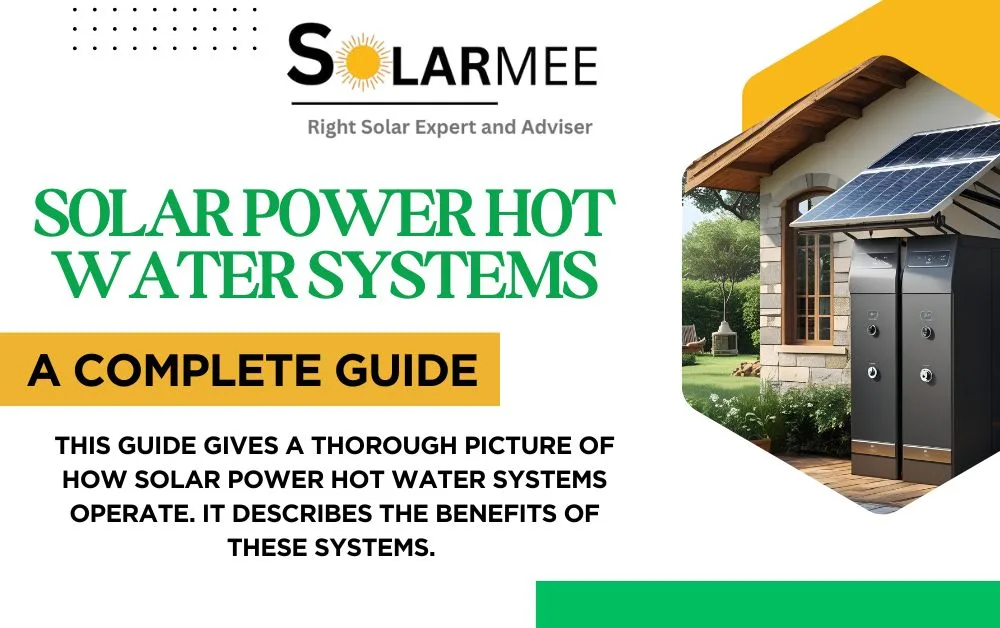The solar energy world is brightening up for the future! Imagine the sun’s rays on your roof providing power to your fridge, laptop, and car. Clean, free, and abundant solar power is now lighting homes, schools, and businesses all over the world. Why? Because it’s good for our Earth. But how? How does solar power work? How does it convert sunlight into electricity? This article will explain quite simply how most solar energy systems work, starting at the most basic level. Whether you’re a student or just understandably curious, we hope to help you grasp the fundamentals of how the sun powers, well, everything.
What is Solar Energy?
The energy we obtain from the sun is known as solar power. We can use it repeatedly because it is limitless, clean, and free. It does not hurt our world. There are two big kinds: solar PV and solar heat energy. Solar PV uses panels to convert sunlight into power. Solar heat energy takes the sun’s heat to make water or air warm for homes or buildings. Both kinds let us use less old fuel and keep the air clean. How does this green energy work? The sun and other natural resources are used to generate electricity without creating dirt.
Energy that is never exhausted and always available to us is termed renewable energy. Solar energy is certainly such an energy: it shines on us every day, giving us light and warmth. This process of using solar energy is indefinite, and hence it is not going to be exhausted.
Also Read: Solar Power for Your Home: A Complete Guide
Difference Between Solar Photovoltaic (PV) and Solar Thermal Energy
Feature | Solar Photovoltaic (PV) | Solar Thermal Energy |
|---|---|---|
What it does | Turns sunlight into electricity. | Uses sunlight to make heat. |
| How it works | Solar panels catch sunlight and make electric power. | Mirrors or panels collect sunlight to heat water or air. |
| What it’s used for | Powers lights, fans, TVs, or charges batteries. | Heats water for homes, pools, or buildings. |
| Example | Solar panels on a house roof for electricity. | Solar water heaters for hot showers. |
| Equipment used | Solar panels with cells. | Mirrors or collectors to trap heat. |
How Do Solar Panels Work Step-by-Step?
Let’s have a closer examination. Simple ways solar panels function on a house are shown here!
- Sunlight Touches the Solar Panel- Initially, the solar panels on your roof are struck by sunshine. The panels are hit by minute particles of light called photons. The construction of the panels is such that they are composed of cells specifically tailored to absorb these photons in the manner of a sponge soaking up water.
- Creation of Electric Current –When cells are struck by photons, they jolt to life tiny bits called electrons. These electrons begin to leap about within the kinds of cells made from materials of pure silicon. And this leaping creates a flow of something called DC (direct current) electricity. It’s like starting a river of energy!
- Inverter Converts DC to AC –Most household devices can’t use DC power yet. Consequently, we convert it into AC, alternating current, with a box called an inverter. It is set to power the televisions, fans, and lights in your house right now.
- Electricity Flows Through Your House –Wires in your walls carry the alternating current. They direct it where you need it into the circuits that power your stuff. These clean energy electrons go to work in the same places as their coal- and gas-powered predecessors, but with none of the harmful byproducts.
- Excess Energy Sent to the Grid or Stored –If your panels produce more power than you need, it is sent to the large power grid for others to use. This is known as net metering; it can lower your bills by giving you credit for sending power into the grid! Or, use batteries for night and cloudy day power. Batteries help you use solar power any time, saving money and saving the earth.

The Science Behind Solar Power
Sun rays turn into power by solar energy through what’s known as the photovoltaic effect. It happens inside solar panels, and it’s very easy to get! Sun rays have tiny bits called photons. These photons collide with the material within, mostly silicon, when they strike a solar panel’s cell. Silicon is a great substance for collecting energy from solar photons.
When photons and silicon meet, they make the electrons that we know move up a level (remember, we’re talking about the sun, not just any light). When electrons zip around, they make an electric current. This flow is the electricity we use for many things, like keeping lights on or playing with an electric toy.
To understand this better, look at a diagram of a solar panel at work. It shows how sun rays touch the panel, move electrons, and make electricity flow. This is the key way solar power plants change sunlight into energy we can use!
Components of a Home Solar Energy System
Simple elements working together to transform sun rays into electrical energy define a home solar energy system. Using simple language, we will now explain the components of such a system.
- Solar Panels (PV Modules):
Flat panels on your roof that gather sunshine are these. Unique cells convert sunshine into sunlight-based electricity. This is how solar panels on a building function!
- Inverter:
An inverter is a magnificent gadget. It converts the electrical output of a solar panel system into a form that your house may use for illumination, ceiling fans, or television.
- Ascending architecture:
A strong framework holds your rooftop solar panels. You may even term these &”sun-safe” because they are a strong frame that protects both the panels and their site as they gather sunlight.
- Optional Battery Storage:
An accumulator saves daytime excess electricity. At night, when the solar panels are quiet, you can draw on them.
- Connection to the grid and electric meter:
The homeowner’s consumption of electric power, as well as its production, is measured by the meter. The grid connection lets the homeowner retrieve power from the grid as necessary and send surplus power to the grid.
How Long Does Solar Energy Last?
Usually, solar panels last for twenty-five to thirty years. For them to generate electricity, this means a very long time. Nevertheless, how long solar panels truly perform depends on a few variables: their quality, the upkeep they get, and the temperature where they are situated. The panels’ quality is a biggie. Very high-quality panels last a good long while.
And the converse is also true: low-quality panels tend not to last as long. Additionally, well-maintained panels stay in the running for the long haul, too, because maintenance (a checklist kind of thing) ensures the panels are functioning in an optimal state. Optimal performance is the precondition for a long lifespan. If something is going to die young, it should at least be performing well for the time it is around.
Solar panels, over time, tend to lose a little of their power, referred to as efficiency loss. Even after a quarter of a century has passed, many panels remain functional. Still, their energy output decreases greatly at this juncture. Regarding the inverter, which transforms the solar energy into usable electricity for your house, it lasts for 10 to 15 years before it must be replaced. The result is that solar energy can last for years.

Advantages of Solar Energy
Solar energy is amazing since it is a resource that can be renewed. It arrives from the sun, which is never going to stop being bright. Unlike energy derived from the combustion of coal or oil, solar energy is super eco-friendly (and there’s no downside at all that I know of). This means it keeps all our natural surroundings clean, especially the air. (By “clean,” I mean not producing any harmful or unhealthful stuff in the atmosphere, like the “clean” in “clean coal”).
Electric bills can be lower when using the solar power system. With the installation of solar panels, one can generate electricity and power an almost anything-electric home in an off-grid manner. Even when one cannot power one’s whole home, paying the power company a minimal amount is very possible when using solar energy.
And not only that; switching to solar also means you achieve energy independence, which is a big deal these days. You’re not beholden to some power company for your electricity. You’re self-sufficient. And that’s a pretty neat trick.
Even solar photovoltaic systems can elevate a building’s worth. Homes featuring photovoltaic systems are rated more highly because people who want to buy homes are very interested in reducing their energy costs. Furthermore, the federal government and various other entities frequently offer all kinds of incentives, including rebates and tax credits, to induce more people to purchase solar systems.
Limitations & Considerations
While solar energy has certain problems, it is brilliant. First, the weather controls it. Since solar panels operate on sunlight, they are less efficient when it is overcast or wet. Then, solar panels at first are very pricey to obtain and set in place. Start with money. They also have dimensions. Setting up the panels demands a sizable space, perhaps on a roof. Last, you need skilled people to repair them correctly, which can take time and add more cost. Considering these elements is crucial before you decide on solar energy.
Also Read: Solar Power Hot Water Systems: A Complete Buyer’s Guide
Conclusion
Solar energy is extremely straightforward! It uses sun rays to make power through what we call the photovoltaic effect. When sun rays hit solar panels, they impact small bits called electrons. This way, it makes power for your home. The system is very clean, conserves a great deal of money, and assists our planet to no end by putting the sun’s nearly limitless energy to work.
It’s an excellent home project that poses almost no risk to you or your family. Ask Mom or Dad or one of your teachers whether they know how solar energy works, and use that as a launch pad to explore the topic further!

“Hi, I’m Ishita ,a content writer who loves turning ideas into engaging stories. I specialize in writing blogs, articles, and website content that connects with readers. Over the past few years, I’ve worked with startups and companies to create clear, creative, and impactful content. When I’m not writing, you’ll usually find me reading or exploring new ideas for my research. This website is my space to share my work and connect with people who value quality writing.”




